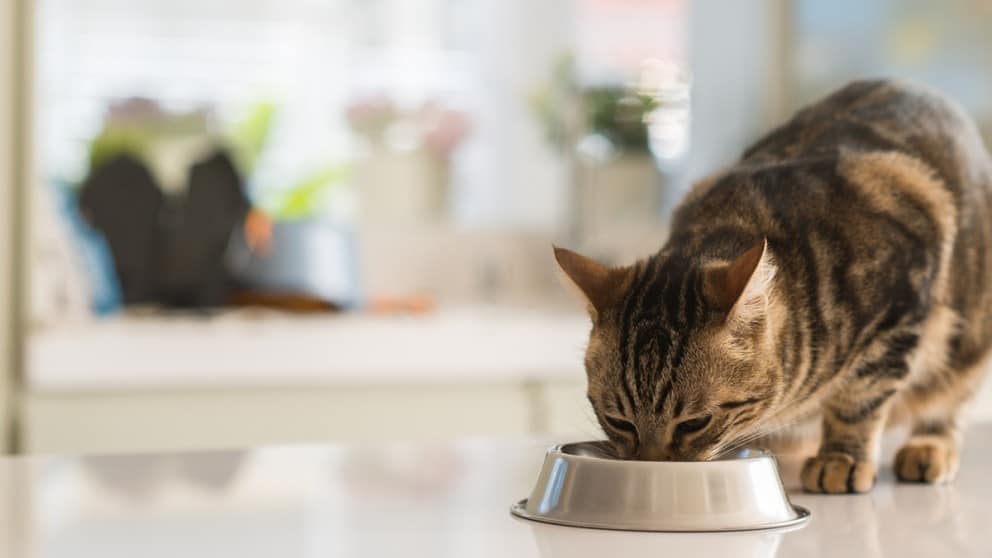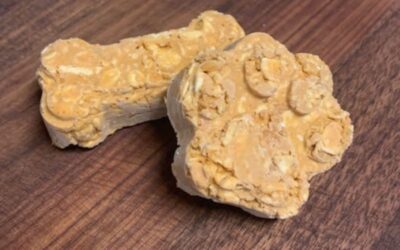Cat Food 101: Wet vs. Dry

To dry, or not to dry—that is the question! Nutrition is key to having a healthy and happy cat, but with all the pet food options available these days, it can be extremely overwhelming to figure out your cat’s optimal diet.
One of the biggest choices you need to make for cat food specifically is wet versus dry food. Wet cat food usually comes in small cans, whereas dry food usually comes in a bag full of small pellets. But what exactly are the different nutritional and health benefits of wet versus dry food?
Wet Food
- More expensive, and spoils quicker: Because wet food has up to 80% moisture content, it can be more pricey than dry food. Wet food also tends to expire more quickly. Plus, once you open a can, you must refrigerate its leftovers, or else the entire container will spoil.
- Easy on sensitive mouths and stomachs: If you are feeding a kitten or an older cat with a weak stomach, then wet food will be easier on your cat’s teeth. Moisture from wet food will reduce hairballs by making the food easier to digest.
- Higher levels of fat and protein, and fewer carbohydrates: Canned cat food usually contains a higher percentage of meat. This is the main reason why wet cat food is more expensive. However, cats are obligate carnivores, which means their bodies are designed to consume lots of animal protein and minimal carbohydrates. Wet food easily meets these nutritional standards.
- Keep cats hydrated: Cats naturally have a low thirst drive, which means they won’t lap up tons of water when they are dehydrated (unlike their canine counterparts). Thus, cats are more prone to dehydration. Luckily, the higher water content in wet food can help your pet stay hydrated throughout the day.
- Beneficial for cats with urinary tract problems, diabetes, or kidney disease: Chronic dehydration can pose a serious health threat to your cat. Dehydration is linked to the development of kidney stones or urinary tract disease. Older cats are especially susceptible to urinary tract problems. So feeding your cat some wet food every day can be a good step to take if you want to maintain your pet’s urinary health.
Dry Food
- Less expensive, and stays fresh longer: Because dry food contains little moisture, it will usually come in larger bags with a later expiration date. If you accidentally leave the bag open on the counter, it won’t ruin everything inside. Vets generally agree that dry cat food is safer to handle: you can pour it into a bowl in the morning and leave it out all day. This is especially suitable for cats, who tend to graze on their food rather than scarfing it all down in a single meal.
- Keeps teeth clean: A common myth is that dry food offers dental benefits purely because the crunching and chewing action scrape your cat’s teeth clean. However, dry cat food is no better for your cat’s teeth than wet food. Still, there are some dry cat food brands that have been formulated to help remove tartar from your cat’s teeth. If you are interested in these oral benefits, consider finding a dental-friendly dry food brand. But don’t forget that daily brushing is still the best way to keep your cat’s teeth strong and healthy.
- Higher in carbohydrates and lower in protein: Because dry food is highly-processed to make it more shelf-stable, it usually contains more carbohydrates and less animal protein. You may consider balancing this out by incorporating both wet and dry food into your cat’s meals.
- Is more energy-dense than dry food: If your cat is underweight, feeding them dry food could help them consume more calories quickly. On the other hand, if your cat is overweight, you might want to switch them over to a wet food diet, which will fill your cat with water, not extra calories.
The Bottom Line
Veterinary science has yet to prove whether wet food or dry food is better for your cat. However, if you’re struggling to decide between the two, you might consider integrating both kinds into your cat’s diet. You might let your cat nibble on dry food during the day, then feed them wet food at night. Or you might mix both canned food and dry pellets together. And always keep their water dish full of fresh, clean water. And remember, you can always talk to your vet if you have any questions about your cat’s specific dietary needs!
Keeping your cat safe and healthy means regular visits to the vet. Learn more about our cat insurance options.
Do you have a pet cat? Here is a simple guide to know how often you should bring your cat to the vet.



